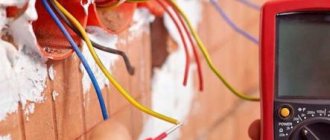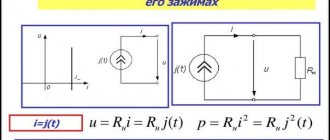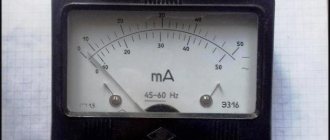Author: ProfGid
An electrician is a specialist in the installation, repair and maintenance of electrical equipment and electrical circuits. By the way, in 2021, the ProfGid career guidance center developed an accurate career guidance test. He himself will tell you which professions are suitable for you, and give an opinion about your personality type and intelligence.
Features of the profession
An electrician can work on any electrical equipment: generators, electric motors, teleautomation, etc.
His specific responsibilities - installation, maintenance, disassembly, repair - depend on the place of work. For example, a city electrician can install power lines, install lights on poles, repair them, etc. At the factory, he can service the electrical network, as well as machine tools, generators, etc. By checking the electrical diagrams, he finds a breakdown and carries out repairs. At large enterprises, electricians work in teams and in shifts.
Required knowledge and skills
An electrician must know:
- design, specifics of operation of electrical networks and equipment;
- protection and blocking systems;
- network diagrams, installations of electrical energy consumers;
- electrical equipment compatibility;
- maximum loads and possible deviations of parameters from the norm;
Attention. The list of knowledge and skills that a worker must have often includes the ability to provide first aid in case of electric shock.
The profession requires certain levels of clearance. Electrical safety groups are assigned to workers who have certain knowledge and skills. To rise to the next level, the master must pass exams. The skill of a specialist is assessed based on the level of clearance.
Conditions for obtaining the next category
1 group. Assigned to workers who do not have direct contact with the repair of electrical networks and equipment.
2nd group. Allows you to repair devices up to 1000 V in tandem with a highly qualified specialist.
3rd group. Receives personnel who are authorized to repair low voltage systems up to 100 V.
4th group. Workers of this access group independently service systems with voltages from 1000 V.
5 group. Given to responsible specialists.
Working qualifications depend on experience and the number of years worked in the specialty.
Specialists are trained in colleges and technical schools. You can enroll in an educational institution after school based on grades 9 and 11. Training lasts 2-3 academic years. During this time, the young man learns everything a good electrician should know.
College student education
Attention. Manufacturers are creating new types and types of fuses, relays, electrical boxes, and instrumentation. To keep abreast of all innovations, the master must constantly undergo retraining courses and independently improve the level of knowledge.
University, technical school, college
Before becoming a top-level electrician with a professional education, you will definitely need training at a specialized technical institution. Nowadays, in many universities, technical schools and colleges you can get special education in various categories. For those who have decided to master the basics of electrical engineering in this particular area, it will be interesting to get acquainted with the features of each of the listed institutions.
In the first case (obtaining knowledge through a university program), a novice electrician will need to study for at least 4-5 years, and sometimes more. Upon completion, the student receives a large amount of theoretical knowledge, but not a very broad practical base. Technical school is something in between in terms of obtaining theoretical and practical knowledge. Theory is taught in this institution at a sufficient level to prepare a competent specialist.
Additional information: Applicants who have completed 9 grades are admitted to the 4-year educational cycle, and those who have studied at school for 11 years study here only for 3 years.
When entering a college or school, the acquisition of initial theoretical knowledge by a novice electrician is minimized. The main emphasis in these institutions is on mastering purely practical skills. Upon completion, everyone will be able to receive the appropriate certificate within the next three years. All these study options can be either paid or budget (without payment). Upon completion of studies, the young specialist receives a diploma and a certificate of assignment of a particular qualification.
Employment contract with an electrician
The address of work, conditions at the workplace, work and rest schedules, wages, guarantees and compensation are the subject of the TD. The parties to the agreement are the employee - in this case, hired as an electrician, and the employer, represented by an authorized person of the management company or the chairman of the HOA.
The structure and mandatory provisions of the TD are regulated by the Labor Code of the Russian Federation. A sample of an agreement with an HOA electrician was developed taking into account the requirements of the law. An important point is the obligation: the employer to provide instructions, and the employee to follow the approved instructions.
Job responsibilities of a housing and communal services electrician
The MKD supply diagram includes: a substation, an input power cable, distribution boards, switches, wires, batch switches, automatic machines and metering devices. In places with high humidity, step-down transformers are installed. Each apartment is equipped with sockets and switches. Electrical equipment requires constant qualified maintenance. When selecting candidates to work as operational and maintenance personnel in a public utility service, the following qualification requirements must be met:
- special education, work experience and rank in accordance with the characteristics of the work
- Electrical safety group IV for single-person servicing of equipment with voltages over 1000V, and not lower than group III for voltages up to 1000V
The job description of an electrician in housing and communal services is developed taking into account the Unified Tariff and Qualification Reference Book (UTKS). The types of work correspond to the end-to-end profession of “electrician for repair of electrical equipment” of the 3rd, 4th or 5th category. An electrician must be able to:
- carry out inspections and diagnostics of elements of the power supply system
- measure current and voltage indicators
- identify problems and identify causes of failure
- repair devices and sensors
- install grounding
- monitor the means of restricting access to electrical appliances and their safety
- prevent emergency situations, promptly replace faulty sections of the circuit
- ensure illumination of common areas
- detect illegal connections and theft of electricity
Electrical maintenance of residential buildings has its own peculiarities. Energy is supplied to each apartment. Individual records of its expenditure are kept. Kilowatts spent on entrances, elevators, intercoms, basement, attic and lighting of the local area are distributed in proportion to the occupied area. A qualified electrician is able to detect electricity leaks and eliminate the resulting overpayments from conscientious residents.
Basic current quantities
When an electric current occurs in a circuit, a constant charge transfer occurs through the cross section of the conductor. The amount of charge transferred in a certain unit of time is called current , measured in amperes .
In order to create and maintain the movement of charged particles, it is necessary to have a force applied to them in a certain direction. If this action stops, the flow of electric current also stops. This force is called the electric field; it is also known as electric field strength. It is this that causes a potential difference or voltage at the ends of the conductor and gives impetus to the movement of charged particles. To measure this value, a special unit is used - volt . There is a certain relationship between the basic quantities, reflected in Ohm's law, which will be discussed in detail.
The most important characteristic of a conductor directly related to electric current is resistance , measured in ohms . This value is a kind of resistance of the conductor to the flow of electric current in it. As a result of the influence of resistance, the conductor heats up. As the length of the conductor increases and its cross-section decreases, the resistance value increases. A value of 1 ohm occurs when the potential difference in the conductor is 1 V and the current is 1 A.
Required Tools
To eliminate breakdowns and install devices, a technician needs special equipment. A specialist must be able to not only connect wires and replace broken devices. He has to make holes in the walls to run wires and dismantle old, worn-out networks.
Craftsman's Tool Set
An experienced electrician has with him:
- rubber dielectric gloves, their integrity is checked before each work;
- glasses;
- Phillips screwdrivers, straight, different sizes;
- a screwdriver with a set of attachments or a cordless screwdriver;
- pliers or pliers;
- platypuses;
- round nose pliers;
- side cutters;
- nylon ties for connecting a bundle of wires;
- calipers;
- electrical installation knives, used for stripping wires;
- screw terminal blocks;
- alloy of tin and lead;
- soldering iron with nozzles;
- spanners;
- indicator screwdriver;
- multimeter;
- drill;
- perforator;
- wall chaser
You might be interested in Color rendering measurement coefficient
A specialist drills a hole in the wall for laying an electrical network
When installing electrical networks and inserting devices, specific types of tools may be needed. Before work, it is necessary to check the integrity of dielectric gloves. The face and eyes must be protected with mounting glasses. We must not forget about the rules of personal safety.
Self-study
The approach implemented in the form of self-study deserves special attention. It is resorted to in cases where none of the previously considered options is suitable for the applicant for an additional profession. Realizing the idea of independently mastering the full scope of knowledge will require some effort. And, above all, extreme organization and composure are required, without which it is almost impossible for a novice electrician to obtain the required level of qualifications.
Additional information: You can independently study in areas of interest by studying materials from textbooks, private training courses, or our website Chips Electrics.
Such a novice electrician, after he joins the ranks of home craftsmen, is unlikely to be able to perform work of a high category of complexity. But the simplest operations of laying electrical wiring in an apartment or installing a grounding loop will be within his capabilities.
Electrical Safety Guidelines for Utility Electricians
In addition to professional skills and competencies, a worker allowed to service electrical equipment in residential buildings must be trained and certified in knowledge of electrical safety standards and regulations.
Order of the Ministry of Labor and Social Protection of the Russian Federation No. 328n dated July 24, 2013 approved the “Rules for labor protection during the operation of electrical installations.” They are industry-wide and apply to electrical personnel, which includes utility electricians. The management company is obliged to develop technical measures to reduce the risk of hazardous situations. Safety measures include:
- mandatory on-the-job training
- preliminary and periodic check of the employee’s health status
- training in techniques for freeing people caught in an electric current and providing first aid
- availability of a certificate indicating completion of training and testing of knowledge in labor protection
- internship under the supervision of a more experienced worker at the beginning of his career
- performing actions only within the scope of the job description
Penalties are provided for violation of discipline, electrical safety standards, labor protection and fire safety regulations.
Procedure for calling a specialist
Telephone numbers and instructions on how to call the emergency service of housing and communal services electricians should be located in a visible place. You can call yourself or report the problem to a senior person in the house. He will explain whether the problems encountered are included in the list of free works or whether you will have to pay a fee.
A list of work related to the article “Maintenance of a residential building” and paid by residents on a receipt is included in the agreement with the management company. If the HOA independently hires a specialist, free services are prescribed in the appendix to the TD or in the job description.
A housing and communal services electrician can repair or install electrical equipment that is not included in the list of free works at the expense of the customer and using his materials. Inviting a specialist working in a management company or HOA is a good decision because:
- he has keys to electrical panels to turn off the current
- in any case, he is obliged to check the work performed
- he is entrusted with responsibility, and he is interested in doing the job efficiently
Ohm's law
This law relates to the basic provisions and concepts of electrical engineering. It most accurately reflects the relationship between quantities such as current, voltage, resistance and power. The definitions of these quantities have already been considered; now it is necessary to establish the degree of their interaction and influence on each other.
In order to calculate this or that value, you must use the following formulas:
- Current strength: I = U/R (amps).
- Voltage: U = I x R (volts).
- Resistance: R = U/I (ohm).
The dependence of these quantities, for a better understanding of the essence of the processes, is often compared with hydraulic characteristics. For example, at the bottom of a tank filled with water, a valve with a pipe adjacent to it is installed. When the valve opens, water begins to flow because there is a difference between the high pressure at the beginning of the pipe and the low pressure at the end. Exactly the same situation occurs at the ends of the conductor in the form of a potential difference - voltage, under the influence of which electrons move along the conductor. Thus, by analogy, voltage is a kind of electrical pressure.
The current strength can be compared with the water flow, that is, the amount of water flowing through the cross-section of the pipe over a set period of time. As the pipe diameter decreases, the water flow will also decrease due to increased resistance. This limited flow can be compared to the electrical resistance of a conductor, which keeps the flow of electrons within certain limits. The interaction of current, voltage and resistance is similar to hydraulic characteristics: with a change in one parameter, all the others change.
Courses
You can become an electrician from scratch if you complete electrician courses in your chosen specialization. This method is very common today, when there is an increased demand for certain professions in the labor market. It will take a novice electrician very little time (on average, classes last from 2 to 8 weeks).
This study of the basics of electrical engineering can be organized in one of two modes (online and offline), which significantly simplifies all procedures for mastering the profession you like. Depending on the course chosen, it can take the following forms:
- Group classes with the study of specialized literature (textbooks on electrical engineering and electrical engineering).
- In webinars mode (collective classes organized via the Internet).
- In the form of extensive open conferences.
Please note: A huge disadvantage of taking courses (regardless of its form) is the insufficient amount of information received.
Here, a novice electrician receives a truncated knowledge of the basics of electrical engineering and will be able to solve only a narrow range of practical problems in the future. Subsequently, he will still have to check and test them in the course of independent practical activities. Other negative aspects of training courses include the fact that they are always conducted on a paid (budget) basis.
On the other hand, this approach to training provides the novice electrician with much greater freedom in choosing the specialization he likes. In addition, its advantages include the opportunity to simultaneously study or work in the main profession (as they say “on the job”). That is, mastering a new specialty can take place in a parallel course. But you should always remember that in this way it is possible to obtain only a limited amount of theoretical and practical knowledge.
A few words about self-taught people
A novice electrician can independently become a highly qualified specialist only if certain conditions are met. To do this, first of all, you will need the help of a professional who will agree to take on a novice electrician as an auxiliary worker at the initial stage of training. A situation can be considered ideal if he pays some amount for the work (most often a purely symbolic amount).
A novice electrician with the rank of a student mastering mastery lessons is entrusted with only the simplest and “dirtiest” operations such as:
- gating walls for wiring;
- drilling mounting holes;
- laying wires and simple connections.
If a novice electrician has a strong desire to become a professional, he will have to strictly follow the instructions of the mentor and immediately complete all the tasks received from him. In addition, you should carefully observe all his actions and, if possible, try to copy them.
Educational articles on our website will help a novice electrician achieve certain success in mastering the profession he or she likes. To begin with, we recommend that you familiarize yourself with the “Installation of electrical wiring” section. In addition, we suggest that you familiarize yourself with the first steps in electrical engineering using the literature we have selected and listed below. After studying these books, the future master will be able to advance one more step along the path of mastering his favorite subject.
Where can an electrician work?
The profession requires different levels and types of training, as well as different categories of workers. For example, you can choose for yourself the vacancy of an electrician, electrical technician, circuit designer, electrical engineer and some others. All of them are somehow related to working with tension, but there are big differences between them.
An electrician or electrician may work primarily in private or government-owned enterprises. The tasks of his work will be the installation, testing and repair of sockets and electrical equipment, ensuring safety, preparing devices for operation, installing insulators and searching for possible faults with their subsequent elimination, as well as many other tasks.
Electrical safety instructions
An instruction is a document that establishes rules for performing work with the risk of electric shock. The head of the enterprise is obliged to organize the development of a training program for electrical personnel and monitor its implementation. The structure of the instructions is standard and contains the following sections.
- Qualification, age requirements and health clearance of the employee
- Preparatory activities before starting work
- Checking tools, personal protective equipment, instructions for their testing and use
- Description of safe work practices while performing duties
- A reminder about the rules of behavior in emergency situations. Actions to turn off power, provide assistance to victims, inform the manager and call emergency services
- Labor protection requirements upon completion of work. Establish procedures for shutting down equipment and leaving the workplace in a safe condition. Reminds you of a reporting entry in the operational journal
Instructions for housing and communal services electricians are carried out according to an approved schedule and at established intervals. A note about the briefing is recorded in a special journal. A sample instruction for electrical personnel in the housing and communal services sector will solve the problem of conducting training according to the established rules.











